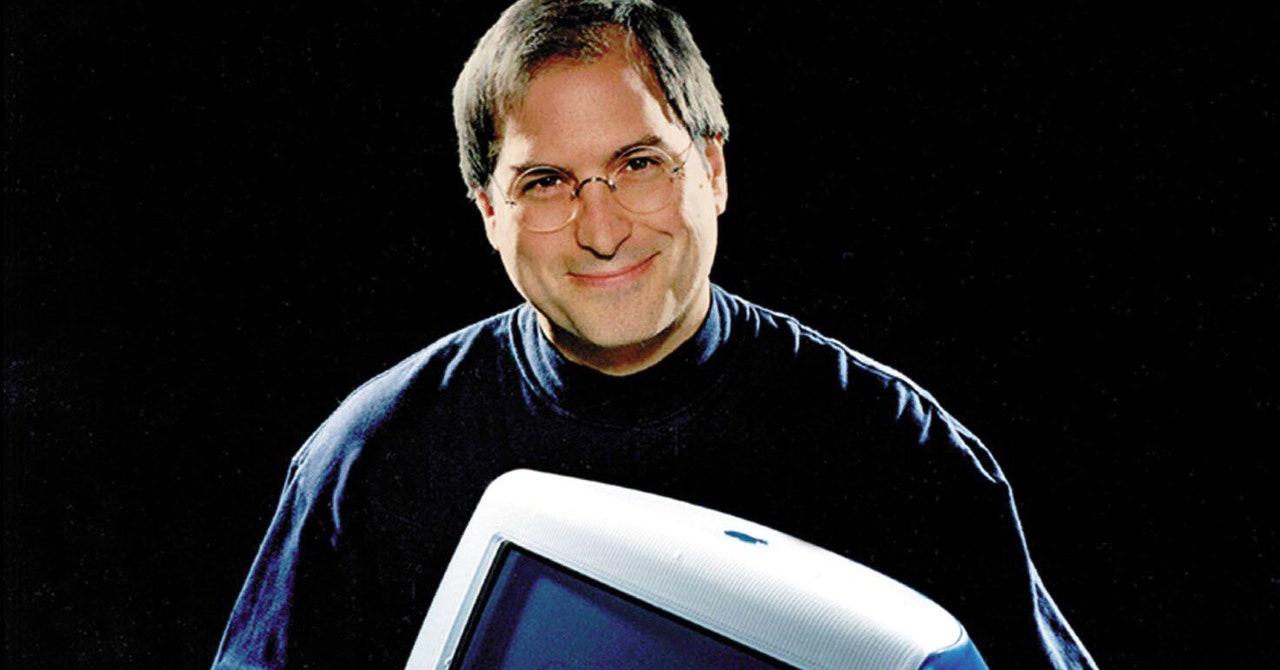Steve Jobs didn’t want the photographer. It was May 1998, and he was about to launch the iMac, the computer that would strap Apple in for a wild ride to the greatest comeback in corporate history. The product was due to ship that August, 25 years ago this month. And Jobs had chosen me, then working for Newsweek, to get an exclusive first look and hang out with him while he prepped for the launch. He hadn’t demanded a cover, as he often would in future years; at that moment neither Jobs nor the nearly bankrupt Apple had that kind of clout. (Even later, when Apple did have that clout, Newsweek would make no guarantees.) But, being Steve Jobs, he was very finicky about who would be taking his picture. He blew up when he learned the identity of the photographer Newsweek had assigned to shoot the behind-the-scenes images. Apparently it was someone who, in Jobs’ mind, had done a less-than-stellar job at a photoshoot years before for Next, the company he founded after John Sculley fired him from Apple in 1985. And he was intensely skeptical of the portrait photographer our art director had chosen to take the hero shot. Moshe Brakha? Jobs had never heard of the guy.
When Steve got antsy like that, floors suddenly got knee-deep in virtual eggshells, forcing everyone around him to step with gravity-defying lightness. His PR team had to all but beg him to walk downstairs from his office and sit for the picture. Jobs glared at me as he grudgingly complied.
Brakha, who had flown up to Cupertino from Los Angeles, was used to recalcitrant subjects: He’d shot Joni Mitchell, Devo, and the Ramones. He handled Jobs the way a Yellowstone Ranch cowhand does a wild stallion, whispering soothing words while subtly maneuvering Apple’s cofounder into the poses he desired. Brakha’s fearlessness seemed to calm Jobs. By the time the photographer asked the interim CEO to sit with legs crossed and hold the machine on his lap, Jobs’ spidey sense told him that he was in the presence of a fellow artist. His smile was sweetly genuine in what became not only the dominant photo of the Newsweek spread but one of the most iconic Steve Jobs shots ever. Apple eventually bought the rights so it could control its use.
That was 25 years ago. This week we’re celebrating not only the anniversary of the iMac G3’s launch, but the moment when the dark clouds over Cupertino parted with the possibility that Jobs might actually pull off a recovery. Though the machine had no groundbreaking new technology, it was cleverly curated to provide the best of Apple’s innovations to date—a powerful G3 chip, crisp 15-inch display, built-in modem, and software that demystified what was then the frustrating process of getting on the internet. Part of the package was the removal of technology—it had no floppy disk drive, which was standard on computers back then. (“A complete nonissue,” Jobs said when I asked if people might complain.) But most striking was its look, created and refined by Jobs’ young, new design wizard, Jony Ive. The final result was a curvy translucent plastic blob that evoked both the Jetsons and a blue watermelon. (The color was dubbed Bondi Blue, after the dreamy waters of an iconic Australian beach.) After months of advertising to drum into our heads the idea that Apple thought different, the company had delivered a new computer that lived up to that slogan.
Personally, I’m also celebrating the anniversary of a turning point in my own relationship with Jobs. I’d known him since writing about the original Macintosh launch for Rolling Stone in 1984, and in 1997 I had covered his return to Apple. But his offer of an advance look at the iMac was the start of a routine in which I’d get an early peek, or at least a post-keynote personal briefing, on virtually every big product Apple launched in the next decade. The access I got for this particular story included multiple interviews, and even some informal hangouts. In his corporate suite at One Infinite Loop, I saw him take a call from Jerry Seinfeld, who was helping him get a clip of the comedian’s first Johnny Carson appearance for a Think Different commercial. And after we drove in his Mercedes to the event facility, I watched an uncomfortable moment when he reamed out one of his employees at the launch rehearsal for not meeting the Jobsian bar of perfection.
The most valuable moments, though, were when Jobs foretold how he would bring Apple back from the dead. “The world is a slightly better place with Apple Computer in it, and if Apple can return to its roots as an innovator, the whole industry would benefit from that,” he said, adding that this was a project straight from his heart. His plan centered around what he called the “whole-widget” strategy, whereby Apple’s products would be designed from scratch, with software created in-house, and marketed directly to consumers. The only company doing anything comparable was Sony. Jobs said he had originally thought Apple could be the Sony of the computer business. But now he had visions of surpassing even that Japanese electronics giant. “Now I say, Apple could be the Apple of this business,” he said. “And that’s what we’re gonna do.”
Read the full article here





